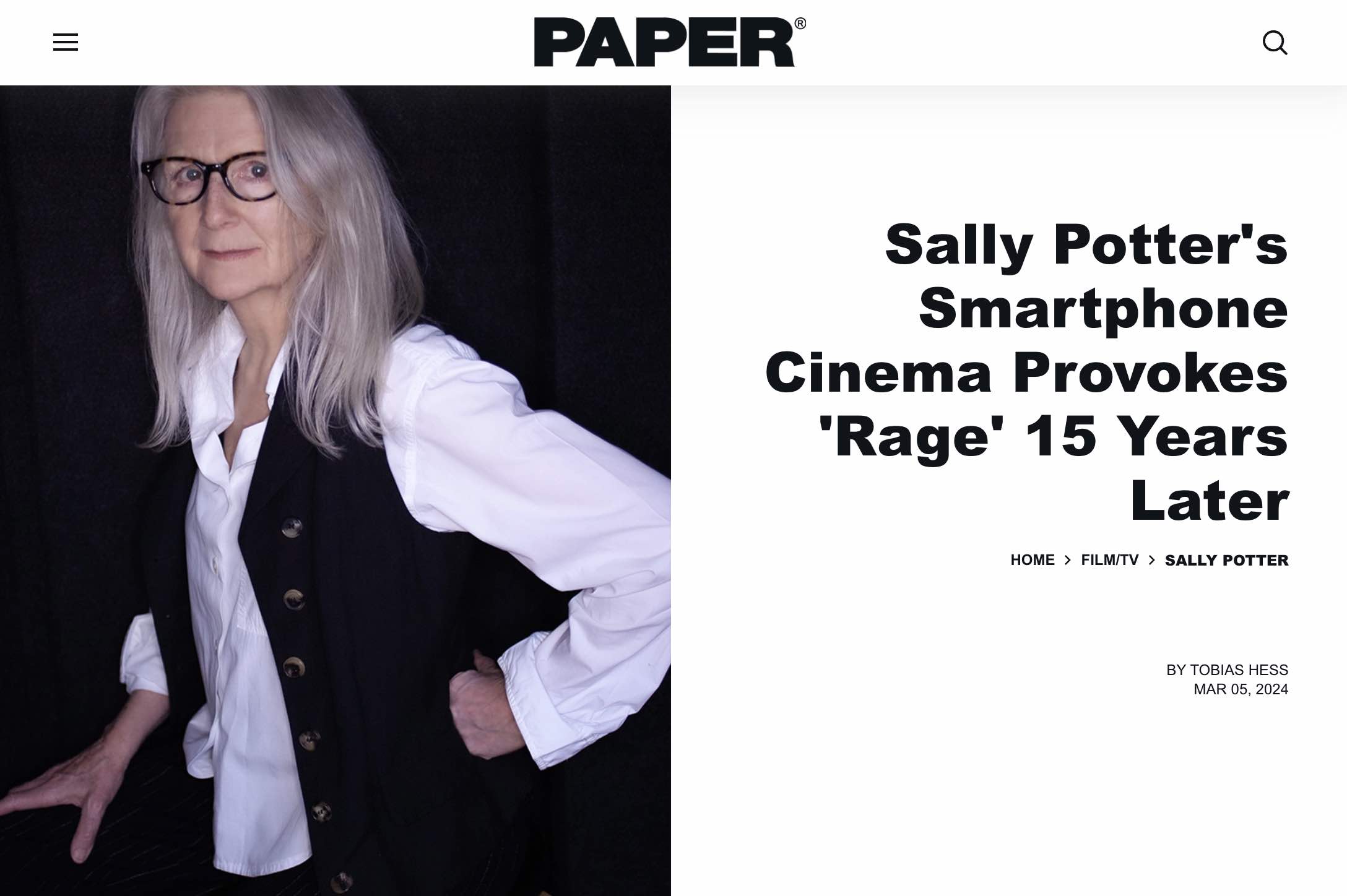Sally Potter in PAPER magazine

“Smartphone cinema” could sound to one like an oxymoron, but Sally Potter, the British filmmaker behind such essential works as Orlando, Gingerand Rosa and The Party, does not see the utility in such distinctions. There must be some way, she believes, to merge the syntax of cinema with the ubiquity of the mobile phone.
In 2024, this idea still strikes as provocative, so one can only imagine, though, how such a project would incite cinephile audiences in 2009, just two years after the release of the first iPhone. In Rage, Potter’s 2009 film, the director boldly explored such a question. The first film designed to be watched on a mobile phone (but also able to to be seen on the wide screen), Rage provoked a small moral panic when it premiered in 2009 at the Berlin Film Festival. “The film was treated as a news item rather than an artistic review,” Potter remembers. “There was one headline that said, ‘Sally Potter wants to kill cinema.’ And I thought, ‘This is the great passion of my life!’”
They were provoked, perhaps, by the formal challenge of this film (as being “for” the mobile phone), but also by the experimental format of the film’s narrative: a series of close-up monologues set against bright, single-color backdrops. Via these monologues, the story unfurls over the course of several days at a fashion show, where chaos, and eventually, murder, push the characters to test the limits of their own morality, hubris, greed and paranoia.
“To give narrative information by withholding all imagery, to see nothing except these faces coming and talking against a color: it's almost like a provocation,” says Potter. But it also fits neatly into the narrative framing. The film is conceived to be shot by a young child named Michaelangelo, who, mobile phone in hand (it was actually shot on a handheld camera), interviews the fashion show’s participants with a child’s blind curiosity.
The cast is stellar, and even a bit prophetic regarding the future of Hollywood: it includes the already iconic likes of Judi Dench, Jude Law, Steve Buscemi and Dianne Wiest, along with then-newcomers like David Oyelowo, Riz Ahmed and a pre-Suits Patrick J. Adams. Such a cast, and the truly gripping narrative, should have made Rage a crowd-pleaser, despite its fairly avant-garde format. But, it seems, the film’s essential provocation, and the monologue format, which is ubiquitous today in our age of TikToks and vloggers, was too ahead of its time.
Thankfully, Potter and company recognized that. After seeing the film in New York’s Metrograph theater during a 2023 Potter retrospective, the director decided to give the film another-go, this time on Instagram on TikTok. Breaking down the film into bite-sized Reels and TikToks, Rage is now available to view either piecemeal or in total through its own Instagram page and TikTok account. The question remains, though: is there a life for cinema on the smartphone? Today, due to the device’s overwhelming ubiquity, we are in a much better place to answer such a question.
PAPER chatted with Potter, while she was in the throes of the film’s Instagram premiere, about the film’s initial controversy, facing the chaos of the algorithm, smartphone cinema and unfolding gender roles in film.
Read here